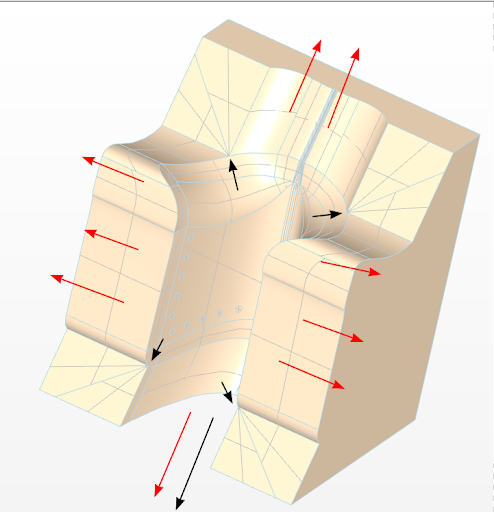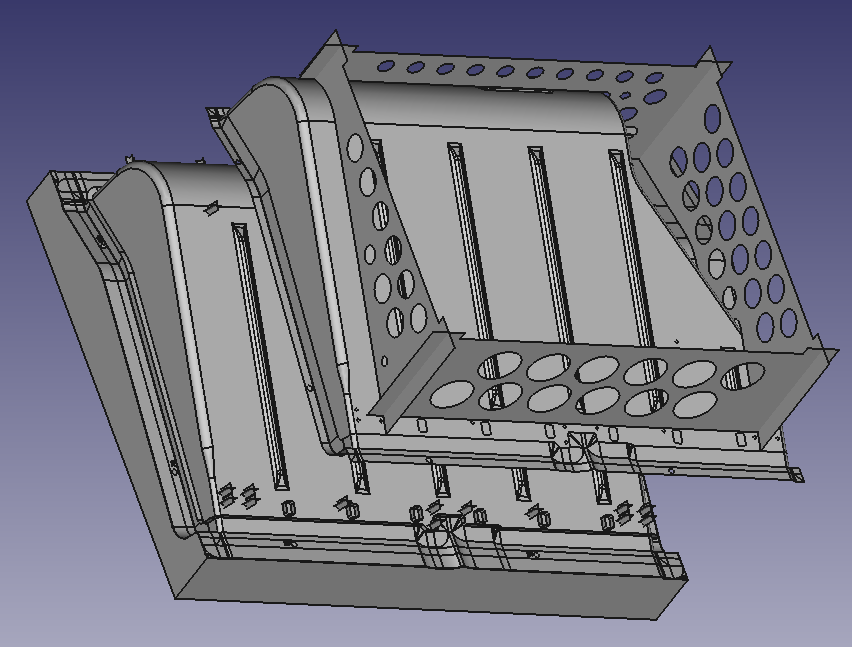Composite manufacturing is ever evolving, and therefore the need for efficiency and precision are critical. Industries such as aerospace, automotive, and marine rely on composite materials to drive innovation, improve performance, and reduce weight. Yet, despite its importance, the composite tooling industry has long struggled with inefficiencies, primarily due to time-consuming manual processes. Plyable is redefining the landscape with our AI-driven platform, automating what was once a slow, labor-intensive mold design process.

The Traditional Bottleneck of Mold Design
At the heart of composite manufacturing is mold design, which has traditionally been a significant bottleneck. Creating a high-quality tooling part requires a meticulously designed mold, a process that has, until now, involved numerous manual steps that can be prone to delays and errors.
The challenges of traditional mold design include:
- Manual Design Processes: Engineers typically rely on manual methods to design molds, leading to inconsistencies and frequent mistakes.
- Time-Consuming Iterations: Achieving the required precision often demands several rounds of adjustments, which can extend timelines by days or even weeks.
- Communication Delays: The back-and-forth between teams and clients further adds to delays.
- Complex Geometries: Designing molds for intricate shapes and custom parts increases the time and resources needed.
- High Costs: These inefficiencies drive up the cost of both tooling and production, limiting innovation and scalability.
As the demand for lightweight, high-performance composite materials grows, the need for faster, more cost-effective mold design has never been more critical. This is where Plyable’s AI-powered solution comes into play.
AI-Driven Automation in Mold Design
Plyable is addressing these challenges using cutting-edge innovation. By leveraging AI and machine learning, we’ve developed the world’s first fully automated mold design technology. This system eliminates many of the bottlenecks inherent in traditional design processes, allowing engineers to focus on high-value tasks rather than repetitive, manual work.
How Does Plyable’s Automated Mould Design Work?
The process starts when a customer uploads a CAD file of the part they need to produce. From there, Plyable’s software takes over, automating the entire mold design process in several key steps. These steps replicate the actions that a CAD engineer would take to make the mold, but in a more reliable, repeatable manner:
- Detecting the Mold Surface: The software begins by identifying the critical “A-surface” of the part that will be molded. It analyzes the geometry of the part, detecting laminar edges and determining the optimal pull direction for the final mold.
- Filling Cutouts and Holes: Any holes or cutouts in the surface are automatically detected and filled. The software determines the best way to fill these areas, ensuring a smooth and consistent molding surface.
- Runoff Creation: The software adds runoff to the surface, providing the necessary space for carbon fibre layup and ensuring proper resin flow during curing. This is particularly important for complex shapes that require precision.
- Extruding the Surface to a Mold Box: Once the surface is ready, it’s extruded to form the final mold. The software ensures the mold box is optimized for material usage, minimizing waste while maintaining structural integrity.
- Adding Backing Structures: For molds made from carbon fibre, the software adds backing structures and locator holes, tasks that would typically take hours for an engineer to complete manually.
With these steps, the software automates the entire mould design process, reducing the time required from several hours to just 20 minutes per part. This not only increases the speed of production but also ensures greater consistency across moulds, regardless of the engineer involved.

The Role of AI in Driving Digitisation
What makes our solution groundbreaking is the use of AI and machine learning to streamline and digitize the entire molding process. By automating complex design tasks, Plyable is removing the bottlenecks that slow down the composite manufacturing industry. AI also enhances precision and scalability, enabling manufacturers to produce high-quality parts at a fraction of the cost and time.
Key Benefits of Plyable’s AI-Driven System:
- Reduced Lead Times: What once took days or even weeks can now be completed in minutes, allowing manufacturers to respond quickly to market demands.
- Lower Costs: By automating labor-intensive tasks, Plyable’s system reduces the need for manual input, cutting down on both time and labor costs.
- Improved Consistency: AI ensures that every mold is produced with the same level of precision, regardless of who is overseeing the process. This uniformity is critical for industries, such as aerospace, where quality control is essential.
- Scalability: Plyable’s solution can be applied across a wide range of industries, from aerospace to automotive, allowing manufacturers to scale their operations without the usual growing pains.
- Increased Innovation: By removing the barriers of time and cost, Plyable’s system enables engineers to iterate more quickly, encouraging innovation in composite parts.
Expanding the AI Impact: From Tooling to Components
Plyable has also now expanded its AI capabilities to offer quotes for component parts. This move transforms us into a one-stop-shop for all composite tooling and part production needs.
Customers can now upload a CAD file of their desired component and receive quick quotes for both the tooling and the part itself. This seamless integration of software into the quoting process further enhances efficiency and allows manufacturers to budget more effectively. By using machine learning to generate design-guided pricing, Plyable ensures that quotes are accurate and transparent, with no hidden costs.
The Future of AI and Digitization in Manufacturing
Plyable’s AI-driven digitization of the mold design process represents a significant leap forward for the composite manufacturing industry. By automating what was once a slow, manual process, Plyable is enabling manufacturers to produce high-quality parts faster, cheaper, and with greater consistency. As industries continue to push the boundaries of what’s possible with lightweight materials, solutions like ours will be essential for driving innovation and meeting the demands of the future.The integration of AI and machine learning into the composite manufacturing process isn’t just about efficiency, it’s about transforming the way manufacturers operate, opening up new possibilities for design, production, and scalability. With Plyable at the forefront of this transformation, the future of composite manufacturing looks faster, smarter, and more innovative than ever.